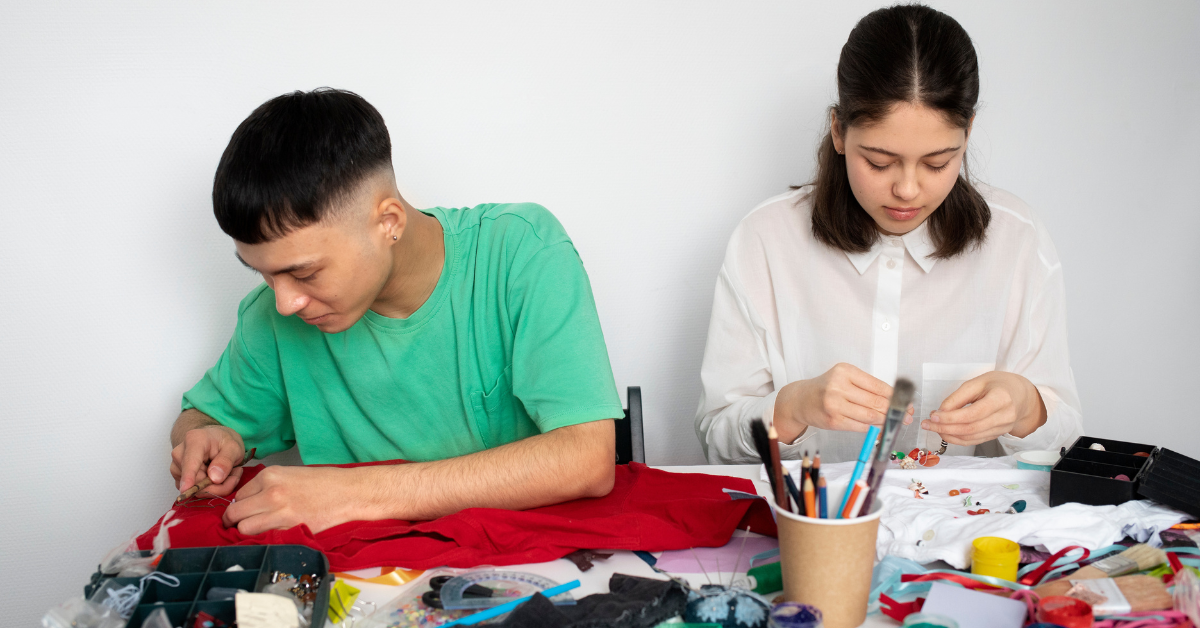In today’s educational and therapeutic environments, preparing individuals for the workforce starts well before formal job training. That’s where the concept of prevocational skills and tools comes in. If you’re wondering what is prevoc material, it refers to hands-on kits and resources designed to teach foundational job-related tasks.
These materials help learners build critical skills like sorting, folding, assembling, and sequencing—skills that form the backbone of employability. Whether used in classrooms, occupational therapy settings, or transitional programs, prevoc materials provide structured, skill-building opportunities tailored for diverse learning needs.
Understanding Prevocational Materials
Prevocational materials, often called “prevoc kits,” are sets of tools and manipulatives used to develop job-preparation skills. These kits offer hands-on activities designed to mimic real-world tasks in a simplified, controlled way. They are commonly used in special education settings, occupational therapy, and workforce readiness programs.
Some core components of prevoc materials include:
- Sorting trays
- Bolt boards
- Folding jigs
- Packaging materials
- Screw-cap containers
- Step-by-step guides
By engaging with these tools, learners practice essential functions like hand-eye coordination, spatial awareness, sequencing, and problem-solving.
Key Skills Developed by Prevoc Materials
These materials are not just for busy work—they’re foundational to building a successful employment path. Skills developed include:
- Fine motor coordination – Essential for handling tools or materials in manual labor or service jobs.
- Task sequencing – Helps learners understand order of operations.
- Visual discrimination – Important for sorting, labeling, or inspection tasks.
- Time management – Many tasks are timed to simulate real job conditions.
- Following directions – Boosts independence and compliance with work instructions.
Table: Skills and Associated Real-World Applications
| Skill Developed | Real-World Application |
| Folding and sorting | Laundry services, packaging tasks |
| Bolt/nut assembly | Manufacturing, equipment setup |
| Sorting by color/size | Inventory, stocking shelves |
| Opening/closing lids | Kitchen work, product packaging |
| Labeling and organizing | Office filing, warehouse sorting |
Who Can Benefit from Prevoc Materials
Prevocational kits are highly versatile and adaptable for multiple audiences. They are most commonly used in:
- Special Education Classrooms
For students who need structured, hands-on instruction to develop life and work skills. - Transition-to-Work Programs
Young adults preparing to leave school and enter the workforce. - Occupational Therapy Sessions
Especially helpful in developing fine motor skills and coordination. - Home-Based Learning
Parents and caregivers use them for life skills training at home. - Adult Day Programs
For adults with cognitive disabilities working on independent living goals.
Real-World Examples of Prevoc Material in Use
Let’s take a look at how these materials are applied:
1. Classroom Simulation
Students are given a kit that includes bottles and screw-on caps. The task? Cap and uncork each bottle, one at a time, then sort them by color. This improves both motor skills and the ability to follow step-by-step instructions.
2. Transition Programs
In a job-readiness program, participants use packaging kits to fold paper inserts and place them into boxes. These tasks replicate real assembly-line jobs and prepare learners for actual employment opportunities.
3. Therapy Context
An occupational therapist uses a bolt-and-nut board to help a learner improve grip strength and coordination—skills essential for physical tasks in jobs like maintenance, carpentry, or production.
Common Components Found in Prevoc Kits
| Component | Purpose |
| Folding jig | Teaches paper folding and motor control |
| Bolt board | Improves fine motor dexterity |
| Sorting trays | Develops categorization and visual scanning |
| Containers with screw lids | Builds grip strength and precision |
| Task instruction cards | Supports independence and sequencing |
Each component can be used alone or combined into longer, more complex sequences depending on the learner’s skill level.
Implementing Prevoc Material in Educational Settings
To be effective, prevoc materials need to be used thoughtfully. Here’s a step-by-step guide to implementation:
Step 1: Assess Learner Needs
Begin with a skills assessment to determine which areas the student needs to develop—such as motor skills, sequencing, or following instructions.
Step 2: Choose Appropriate Kits
Select a kit or activity that aligns with those goals. Make sure the task is neither too easy nor too advanced for the learner’s current level.
Step 3: Demonstrate the Task
Use visual modeling and step-by-step instructions to demonstrate how the task is done.
Step 4: Supervised Practice
Allow the learner to attempt the task with support and correction where needed.
Step 5: Independent Completion
Gradually reduce support so the learner can perform the task independently.
Step 6: Data Collection
Track performance using rubrics or progress charts to monitor growth and areas needing improvement.
Benefits of Using Prevoc Material
Here’s why educators and therapists widely adopt these kits:
- Customizable – Tasks can be adapted based on individual ability and progress.
- Engaging – Tactile tools are more engaging than paper-based exercises.
- Measurable – Outcomes like accuracy, speed, and independence are easy to track.
- Versatile – Suitable across various ages and learning environments.
- Low-risk – Learners can make mistakes and learn in a safe environment.
Sample Lesson Using a Prevoc Kit
Here’s a simplified lesson plan for using a bolt and nut board:
- Objective: Learner will independently assemble 10 bolts and nuts within 5 minutes.
- Materials: Bolt and nut board, timer, instruction card.
- Procedure:
- Demonstrate the task twice.
- Allow guided practice with verbal cues.
- Begin timed trial with independence.
- Evaluation:
- Count completed sets.
- Track time taken.
- Note any assistance required.
- Goal: Improve speed and accuracy over 4 sessions.
How Prevoc Material Supports IEP Goals
Prevoc materials are often used to support Individualized Education Program (IEP) goals. Here’s how:
- Motor Skills – Tools like bolt boards and screw lids align with fine motor goals.
- Task Initiation and Completion – Step-based activities help build stamina and focus.
- Following Multi-Step Directions – Structured kits mimic task sequences used in job roles.
- Workplace Behavior – Tasks encourage sitting for extended periods, staying on task, and self-monitoring.
These materials also lend themselves to documentation, making it easier for educators to track progress and meet compliance requirements.
Challenges and Solutions
Even the best tools come with challenges. Here are some common issues and how to resolve them:
| Challenge | Solution |
| Learner becomes frustrated | Break task into smaller steps, add modeling |
| Task is too easy or hard | Adjust difficulty; use alternate kits |
| Engagement drops | Add variety or create real-world context |
| Generalization is difficult | Practice skills in new environments |
Long-Term Impact of Using Prevoc Materials
The goal isn’t just to complete a task—it’s to build lifelong skills. Long-term benefits include:
- Increased independence in daily activities
- Higher confidence in job training environments
- Improved chances of meaningful employment
- Better integration into community-based settings
For some learners, mastery of these foundational skills can mean the difference between needing long-term support or moving toward independent living and working.
Conclusion
Prevoc materials are powerful tools that build essential job-readiness skills in a structured, supportive environment. Whether in schools, therapy clinics, or homes, these kits help individuals move confidently toward independence and employment.
If you’re an educator, therapist, or caregiver looking to empower learners with real-world skills, now is the perfect time to explore prevoc materials. Start small, be consistent, and track progress—you’ll be amazed at the growth that follows.
Frequently Asked Questions (FAQs)
Q: What is prevoc material used for?
A: It’s used to teach pre-employment skills like folding, sorting, and assembling tasks that prepare learners for real job responsibilities.
Q: Who should use prevoc kits?
A: These kits are ideal for students in special education, adults with disabilities, therapy clients, and anyone needing job-readiness training.
Q: Are prevoc materials appropriate for home use?
A: Yes, many caregivers use simplified kits at home to reinforce daily living and work tasks.
Q: Can these tools be customized for different learning levels?
A: Absolutely. Most kits are adaptable, allowing for increased complexity as learners progress.
Q: How do I measure success?
A: Use performance data such as task accuracy, time to complete, and independence level.


